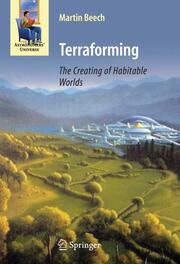Detailansicht
Terraforming
The Creating of Habitable Worlds, Astronomers' Universe
ISBN/EAN: 9780387097954
Umbreit-Nr.: 1138236
Sprache:
Englisch
Umfang: xi, 291 S., 60 s/w Illustr.
Format in cm:
Einband:
gebundenes Buch
Erschienen am 15.01.2009
Auflage: 1/2009
€ 48,14
(inklusive MwSt.)
Nachfragen
